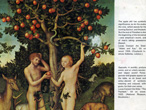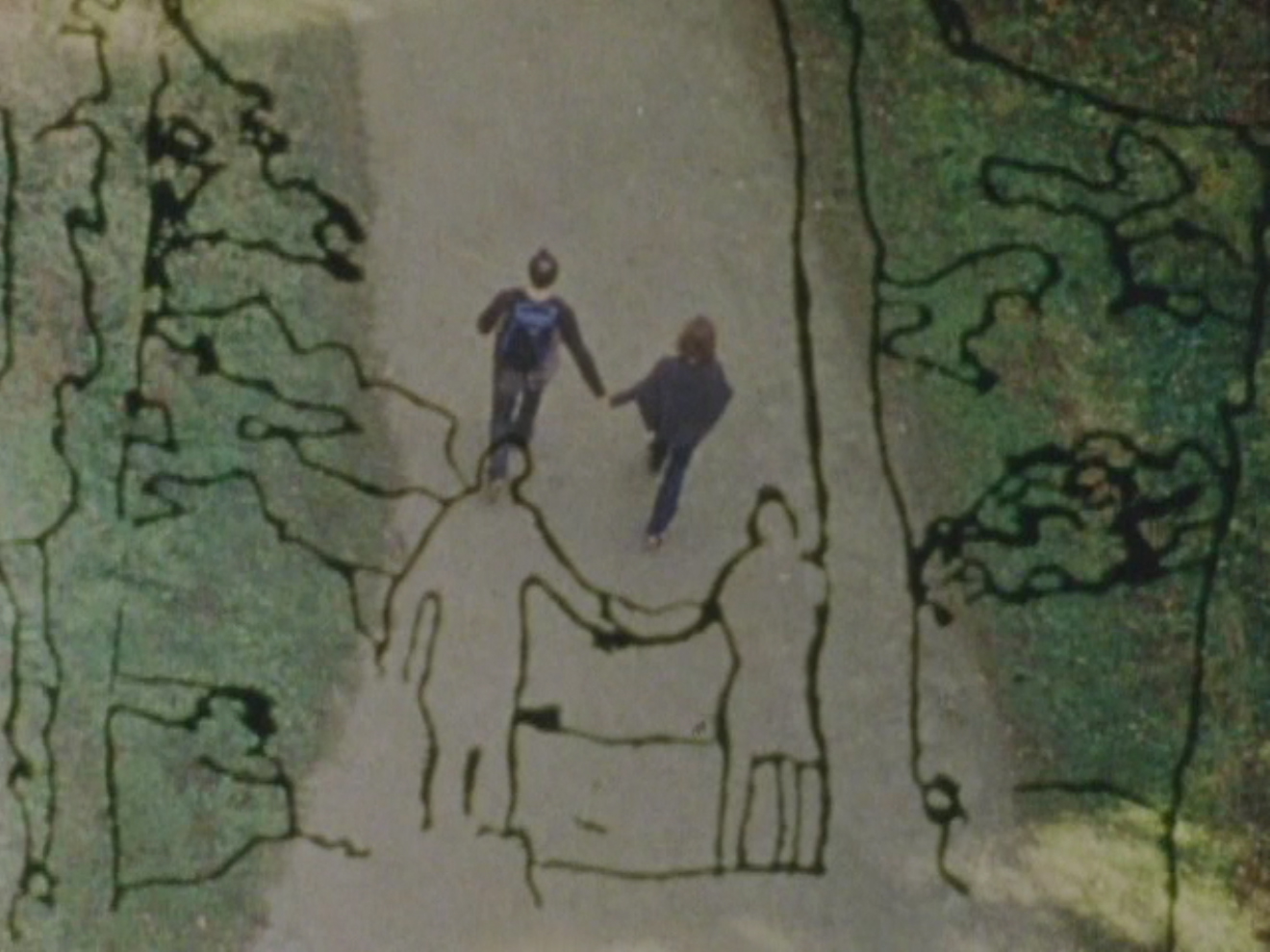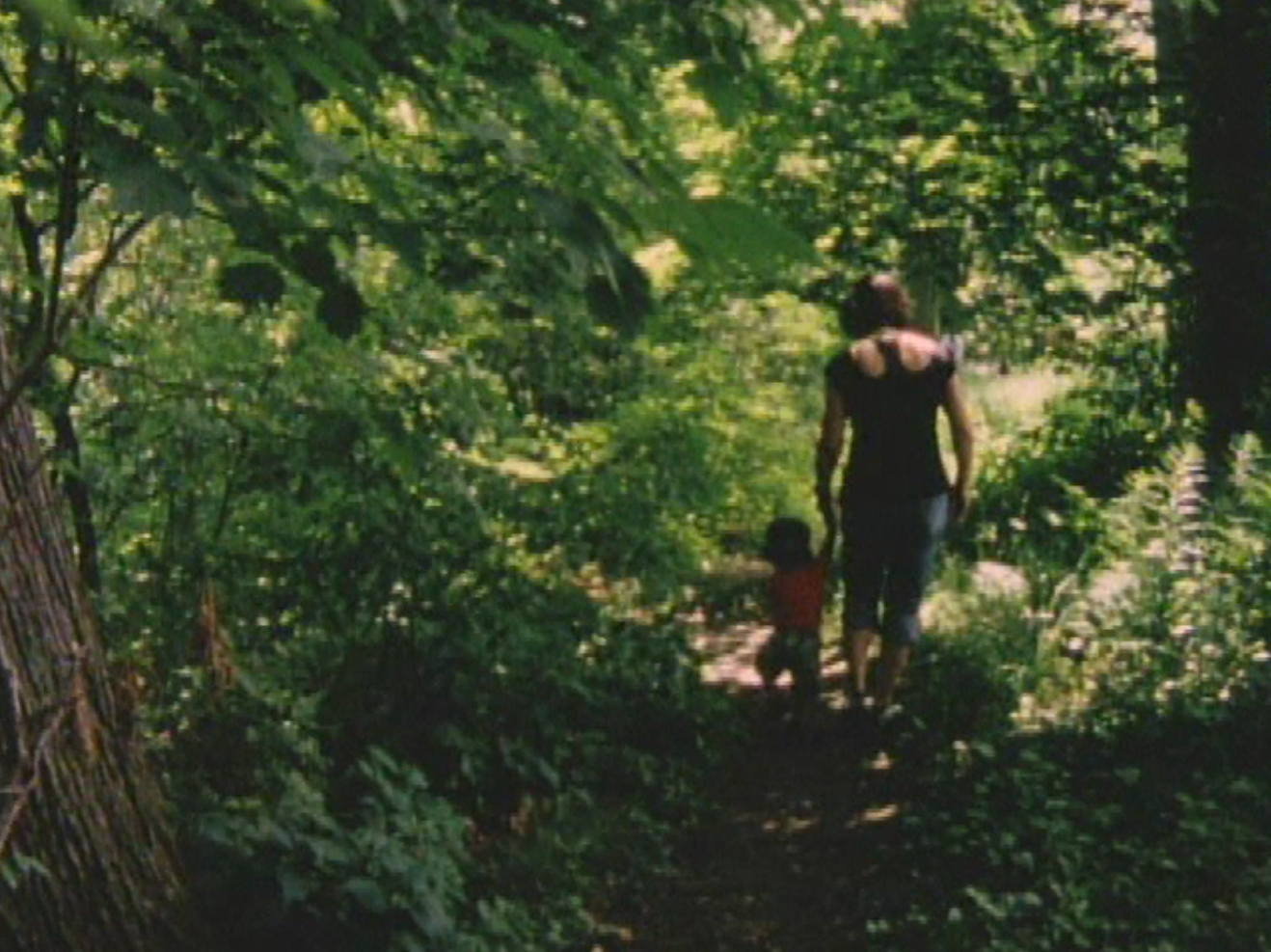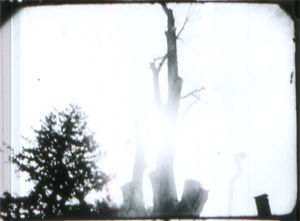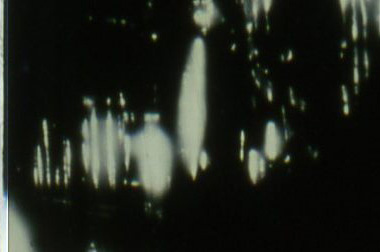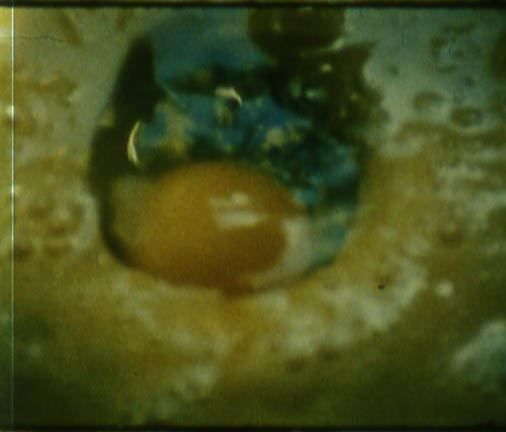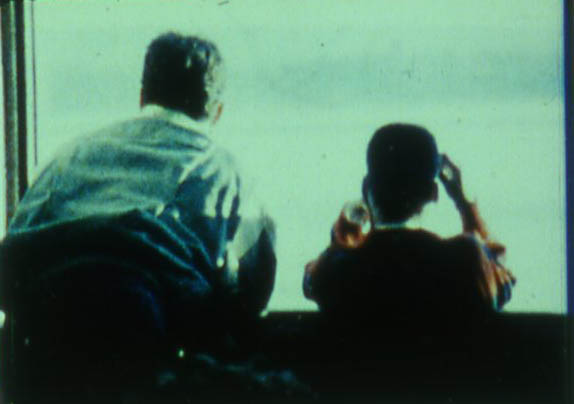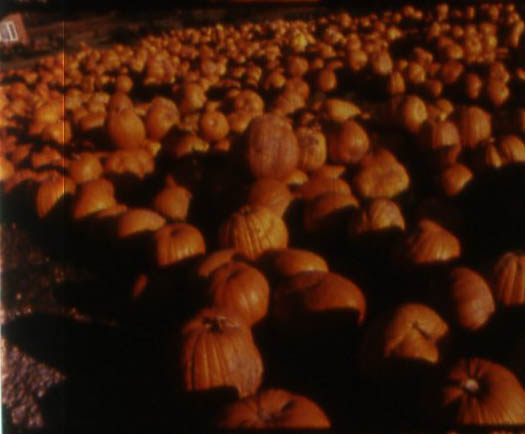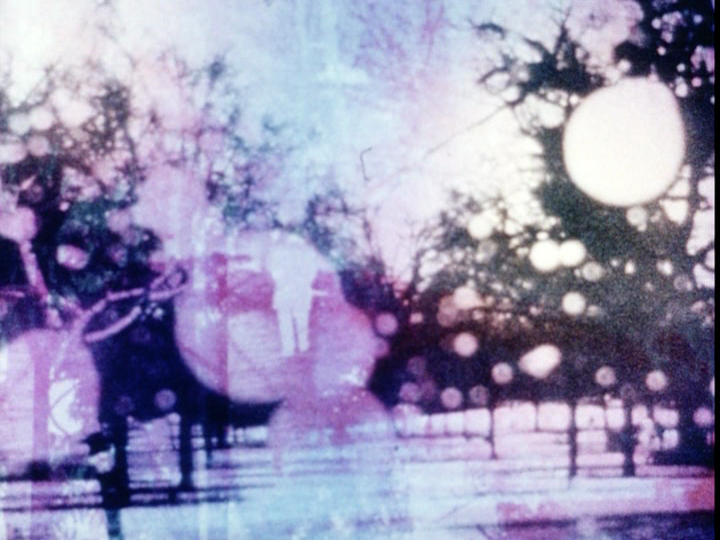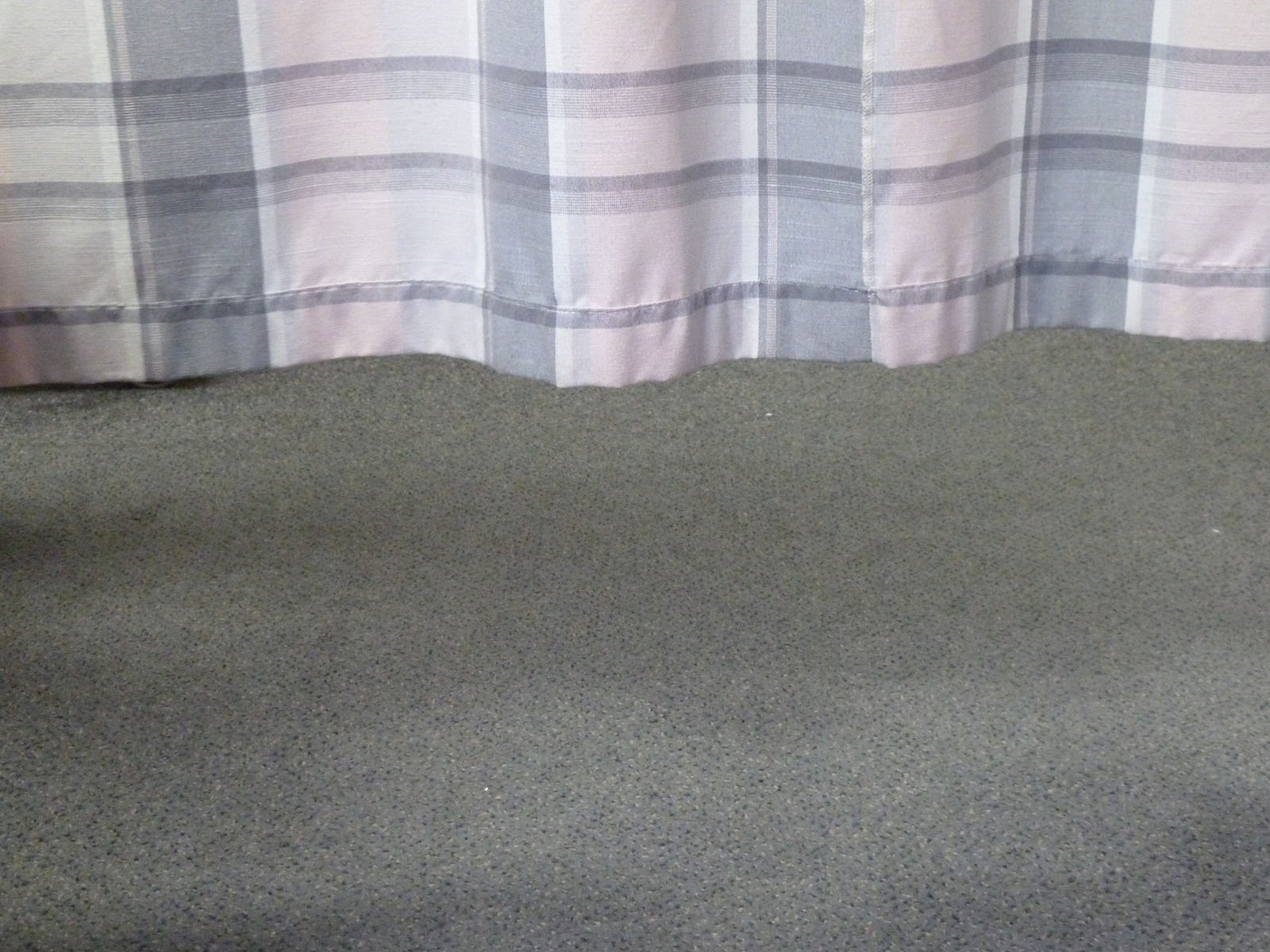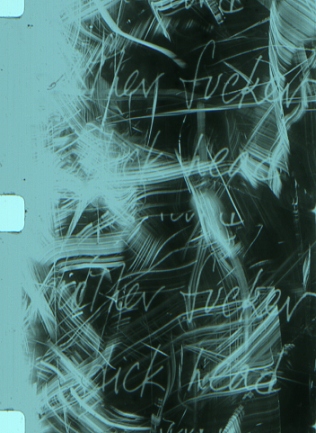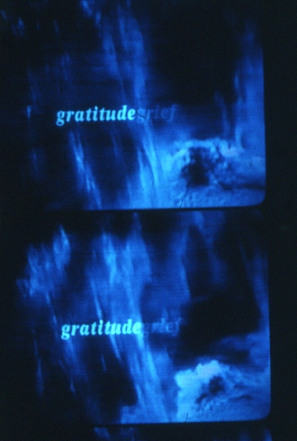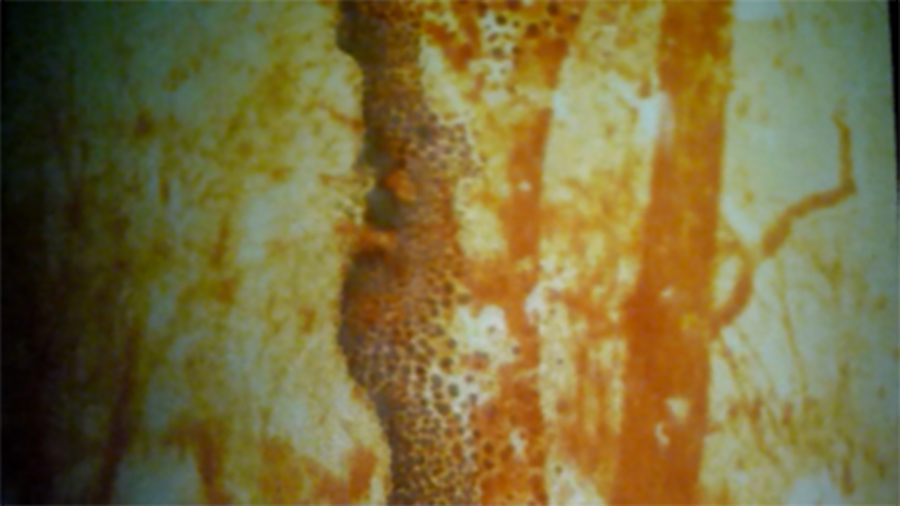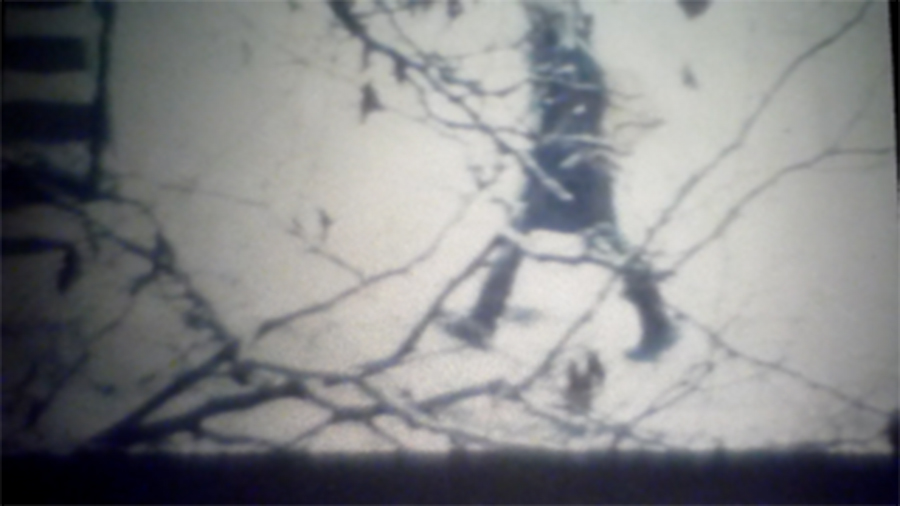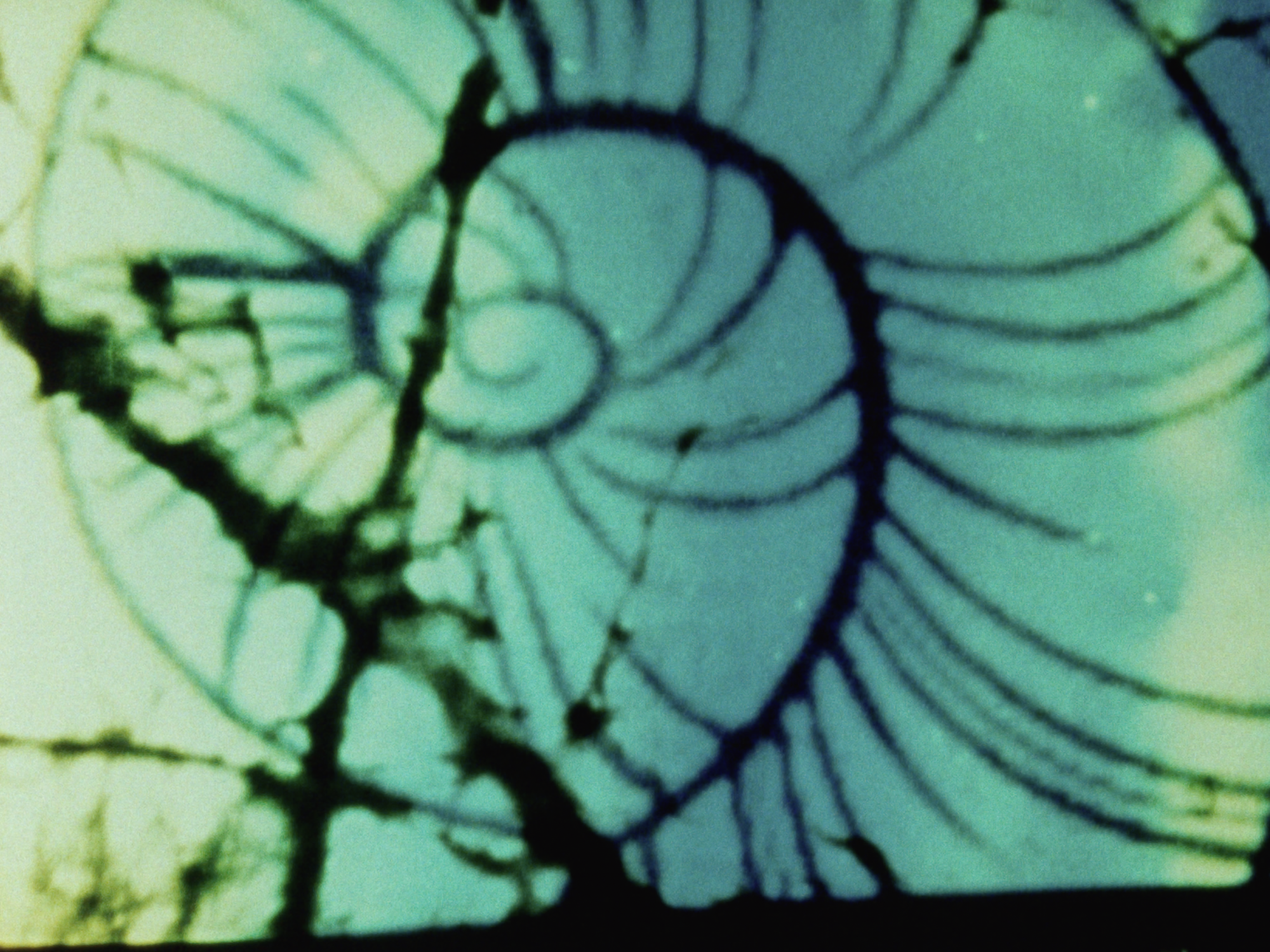
![]()
Press Kit
Short Bio l back to top
Barbara Sternberg has been making (experimental) films since the mid-seventies. Her films have been screened widely in North America and Europe in artist-run centres and galleries, including the prestigious Museum of Modern Art in New York, George Pompidou Centre in Paris, and Ontario Cinematheque in Toronto. Her films are in the collections of Queen's University, the Art Gallery of Ontario, and the National Gallery of Canada. Sternberg has also participated in gallery exhibitions with mixed media installations, performance art and videos. She was co-founder of Struts gallery in Sackville, New Brunswick, was a founding member of Pleasure Dome: Film Artists Exhibition Group in Toronto, and taught in Film and Visual Arts at York University.
Artist's Statement (short) l back to top
Film is the greatest medium- it has inexhaustible possibilities! And its most basic properties, light and time, inherently connect film to how we perceive reality: in passing, in light and in shadow, through repetition, bodily. Film is analogous to life – light, energy, life.
Artist's Statement (long) l back to top
I have made performance and installation artworks and recently videos and a CDROM, but my main practice, from the mid-seventies, has been (experimental) film.
Film is a great medium - endless possibilities! Luckily for me, its essential properties, light and time, intersect with my interest in perception (by perception I mean visual and bodily): how we see the world and situate ourselves in it; how we perceive time as it is passing, how it presses on us - history, memory, repetition, movement, presence; how we experience the layers of reality, or more accurately, realities – inner and outer worlds.
I can sum up my aesthetic position in three words: daily, observational, messy. I don't go for the monumental. I film the everyday -the mystery that is the everyday. I tend to work against the glossy surface, to mess it up. I see perfection as a barrier. Subjects are not there for me to have under my control. I take an observational stance - more a glance than a studied gaze. The world is not ours to hold on to.
I use many different images and allow for their multiple reading. A sense of something, of the fullness, the complexity and relatedness of the world accumulates over the duration of the film. In depicting the contradictions and paradoxes of life, my films say "and" rather than "or": light and shadow, good and evil, life and death. I work with images between abstraction and representation; between thinking and feeling. When images are emptied of meaning, they approach being. I think of film as analogous to life. The ephemerality of life is echoed in the temporal nature of film, the 'stuff' of life in the emulsion, and the energy, life-force in the rhythmic light pulses. Light, Energy, Life.
I was asked at a recent screening how it felt working in an obsolete medium! The questioner was referring to Marshall McLuhan's thought that a medium can only become art after it is obsolete. So, perhaps digital will relieve film of its mass entertainment function (as photography freed painting from portraiture) and experimental film practice will receive the critical, museum, and audience attention it so richly deserves. There are so many great films out there. Thrilling to see!
Photos (films) - click for 300 dpi l back to top
Photos (filmmaker) - click for 300 dpi l back to top
Critical Praise for Sternberg's Work l back to top
George Clark, To The Distant Observer: On the films of Barbara SternbergMoving between intimate and universal forms, Sternberg’s work skillfully combines the specific with the poetic or metaphoric.
... the relationship between the material of film and its reflection in natural phenomena has as a counterpoint a self-critical exploration of the role and function of art in life and society.Tim Dallett, Re:Surfacing
In Sternberg's films, sequences of images are given life and reality through specific strategies of motion, layering, montage, and repetition. Images never crystallize into static, precious compositions, but rather change and overlap in response to an intensely physical sense of rhythm.Sternberg's work is typically 'Canadian' - diffident, hesitant, restrained. It reworks familiar themes of Canadian culture - landscape, visual perception (particularly in relation to the film apparatus), memory, and identity with a restrained and diligent ethical intelligence that gathers authority as the film builds.
The work emerges from a rigorous understanding of the potential and authenticity of film as a medium, but its ultimate significance seems to me to lie in its proposition of visual 'truth' as something indirect, provisional, and subject to revision - yet also urgent, necessary, and valid.Gayle Young, FILMTIME Musicworks 45, 1990
Sternberg uses rhythm, repetition and layering to organize her films, resulting in a simultaneity similar in many ways to complex polyphonic music.Barbara Godard, Living the Everyday as History
Barbara Sternberg makes films that set in place many complex networks, films that touch, that move, working to change perceptions, to reorder a world.Barbara Sternberg has pursued a self-reflexive exploration of the filmic medium, of the properties of light and movement, in tandem with a meditation on the quotidien in both its evanescence, scarcely graspable, and its repetitiveness.
Through this investigation of repetition, Sternberg engages in an extended meditation on temporality… with embodied time, time as it is lived and felt in bodies, both those of actors and spectators, as rhythm.
BODY AND TIME: THE FILMS OF BARBARA STERNBERG by Vivian Darroch-Lozowski
Barbara Sternberg describes her films as being about time. And I have found them to be about time, time depicted as a fluid mass---that which is shifting, imposing and everywhere around us. But Sternberg's films are also about body, body as the only place in which time can be lived. Her work's significance bears on the quest of how our bodies may have an ethical relationship with time.Mike Zryd, Recent Work from the Canadian Avant-Garde
We can perhaps best approach her films by understanding them as sites and occasions for contemplation, often shot through with anxiety, but laced with moments of tenuous beauty.Rae Davis, Panorama: 4 films by Barbara Sternberg
Sternberg constructs her films in a deeply intuitive way, and the viewer is left to roam around in them until areas of interest and overlapping themes emerge. Like all works of art of enduring interest, a Sternberg film presents fields of force and energy, of multiple possibilities. It's a question of sinking into it, absorbing it viscerally, soaking it up intellectually and emotionally. A whole body/brain response. Nothing less.
Mike Hoolboom
"...a question of resettling, of continually relooking, of jogging yourself out of a comfortable view...and this continual glancing and reglancing seems at the very heart of Sternberg's seeing camera practice.”
Critical Praise for Films l back to top
OPUS 40
Repetition in Opus 40 is not a mechanical function of the film apparatus…rather, it is subject to the varied and ineffable rhythms of human work in Sternberg's optical printing and editing. What becomes interesting is how much surprise and refinement of vision arises out of a meditation on the regularity and predictability of repetition.
Mike Zryd, Recent Work from the Canadian Avant-GardeIn Opus40 (1979), Sternberg multiplies ideas of repetition of several levels involving both a cycle of quotations on the sound-track and split-screen imagery. Bart Testa, Spirit in the Landscape, Art Gallery of Ontario
TRANSITIONS
Stan Brakhage has called the main formal trope of Transitions "eidetic¬-beseeming superimpositions." Expanded upon, this phrase summarizes some of the complexities of Barbara Sternberg's film oeuvre. …We are removed from the simple linearity of clock time and set in the far more complex and enigmatic realm of experience that founds the life of the imagination. Mike Zryd, Recent Work from the Canadian Avant-Garde
If the foundry workers' bodies [in Opus 40] were shaped by the labour of their backs as their backs and ears lived in very direct contact with time, the woman's body in Transitions is shaped by the labour of her heart and her whispering mouth as she lives in direct contact with that "time can change"---disappear---the past is no longer. Remembrance is born…. This film creates a duration of lived anxiety---anxiety different from activity, anxiety more like experience undergone.
If in Opus 40 time and bodies are conditioned, in Transitions time and bodies are temporally and psychically bound. In Opus 40 time, the matter of the world is recognized for what it is. In the time of Transitions, the world is largely interpreted.
BODY AND TIME: THE FILMS OF BARBARA STERNBERG by Vivian Darroch-LozowskiA TRILOGY
A Trilogy is grounded in the effort of surviving through time. While watching it, it calls me to attain for my body a reconciliation with time. As the film proceeds I am also being called to search for a way in which I/my body may become more intimate with time (all of history and all of futurity)…
BODY AND TIME: THE FILMS OF BARBARA STERNBERG by Vivian Darroch-Lozowski[In A Trilogy]…two movements - one always moving inward toward some unity of expression, an offering from filmmaker to viewer; the other a visual and oral representation of the coming apart ... the recognition of hole in whole; the parting of mother and son. Gary Popovich, Practices in Isolation
In A Trilogy,...the landscape is not silent and other. It is symbolized as primal and natural by association with the sea and the mother’s body. In what is Sternberg’s major trope in the film, landscape serves a classic, indeed even archaic, function of signifying the unity and truth of being before separation and historical consciousness.
Sternberg seeks to resurrect storytelling in a feminized mode by orchestrating a poetic fold between the self and the landscape
Bart Testa, Spirit in the LandscapeAT PRESENT
The first movement of Barbara Sternberg's At Present is preoccupied with interiors, both physical and psychic, and with the minute details of the present moment. Responding to films made by men on the subject of love, Sternberg aims to strike a different chord within a gendered discourse. Parables read over the solitudes of the four domestics suggest a new truth to be found about love or the application of a moral remedy. Yet the parable's paradox is that the specificity of its meaning lies in the universality of its embrace. Love, although house bound, resists confinement.
Karyn Sandlos, I can see your history in the way you moveBEATING
This supremely lyrical Beating makes some brutal connections.
Beating comes down hard.
Toronto Star, April 6, 1995, Peter GoddardBeating is impelled by an obsessive devotion to bodies shimmering in the light of a history too terrible to remember. Or forget…
Kika Thorne, Pleasure Dome programme notesBeating stands as one of Sternberg’s finest films to date and a testament to her constant re-examination of the self and its relationship to the history it is caught in.
Alex MacKenzie, Blinding Light programme notesAlthough [Beating] is never far from the beauty and colour of its sensuous imagery, it is also never far from its scratches, its black and white negative photography, and finally the specter of Nazism and the danger of forgetting the Patriarchal seeds which bred it.
Jeffrey Lambert, San Francisco, program notes[Beating]… differs in tone and degree of intensity from Sternberg’s earlier work, marked more by doubt and interiority. A film that veers to the negative – negatives are refilmed in hicon film to heighten the blackness of the image – it interrogates history’s oppressions and erasures from the personal perspective of a woman born in Canada mid-century.
Barbara Godard, BEATING, Matriart mag.MIDST
In midst, Barbara Sternberg has made a lyrical film about at¬tachment, integration, belonging. Many of the familiar elements of Sternberg's work are here: speed, pulsing rhythms, explosions of colour, light and shape, images of nature and the built en¬vironment.
Sternberg has never been one to be intimidated by large themes. Her tendency has been to take them on frontally, representing the fullness and density of experience rather than mirroring the whole through protracted concentration on the single small part. In midst, she works on a level where the grand scope of her enterprise is in perfect poise with her creative abilities as a filmmaker and, as an artist, a deep and compulsive 'need to know', a yearning for connection.
It creates a searchingly visual experience that reaches for balance, where everything in the landscape (or reality) is moving, but is at the same time still, held in an abstract composi¬tion. This paradox of 'the still point of the turning world', like a held breath, like the almost magical nature of film itself where the light through a series of frames nails the single moving image to the screen, is the resonant heart of the film.
Being here: Barbara Sternberg's midst by Rae Davis
LIKE A DREAM THAT VANISHES
Like a Dream that Vanishes shows an artist in complete command of her medium; thematically, it reveals a bemused but sympathetic, analytical but humane observer of everyday life.
Like a Dream that Vanishes is not only Sternberg's most artistically accomplished film, it is her most philosophical work to date.
… a dynamic relationship -a dialectic, if you will -between the dark, dense, inert matter of unexposed emulsion and the animating energy of light… repetition and variation in Like a Dream that Vanishes, reminding us that living is, by and large, a matter of repeating things we have done many times before… Sternberg is among the artists who make dailiness deeply interesting without glamourizing or glorifying it.
…thematic richness and formal complexity of her latest and, in my view, best work to date. Everyday Wonders in Barbara Sternberg's Like a Dream that Vanishes By William C. WeesBURNING
In Burning there’s "...a question of resettling, of continually re-looking, of jogging yourself out of a comfortable view...and this continual glancing and re-glancing seems at the very heart of Sternberg's seeing camera practice.”
Mike Hoolboom, email to B.SternbergSURFACING
Surfacing is"...a beautiful film. A new way with colour. But more and more epiphanic."
Barbara Godard, email to Sternberg
Interviews l back to top
Cantrills Filmnotes, #81,82 June '96
"Film Process as Self-Actualization, Dirk de Bruyn interviews Canadian filmmaker Barbara Sternberg"Shifting Realities: An Interview Barbara Sternberg with Barbara Godard; Tessera 33, Winter 1992 Pecking: Barbara Sternberg in the 90s, an interview by Mike Hoolboom Film/Time/Film: Barbara Sternberg and Gayle Young; Musicworks article 45, Winter 1990 Transitions: Sternberg in the 80s, an interview by Mike Hoolboom
_2SM.jpg)

